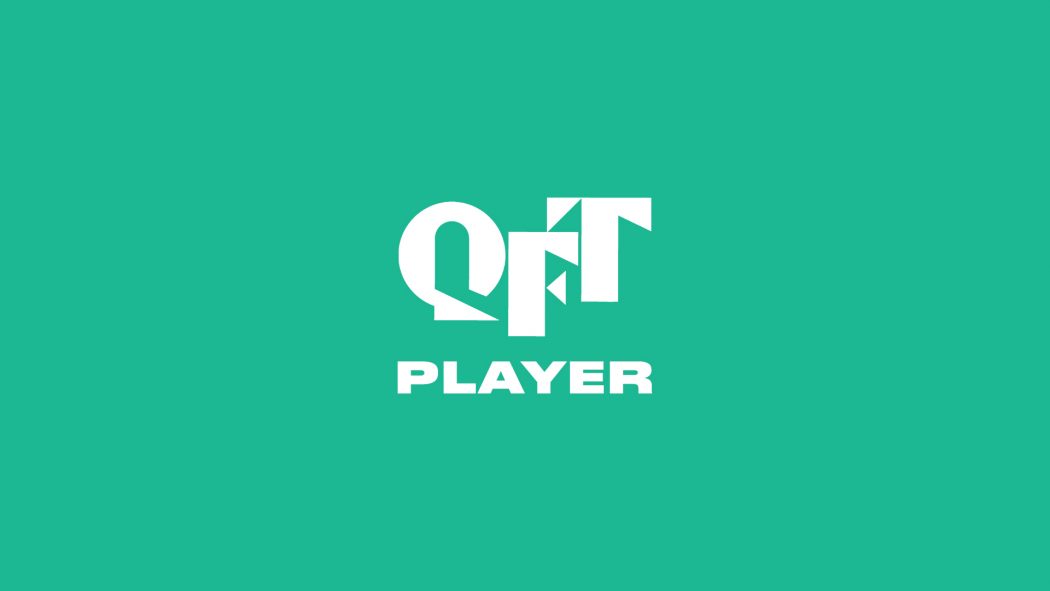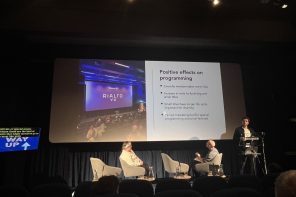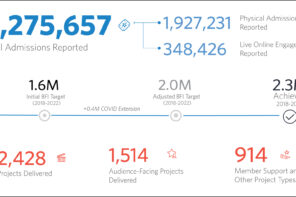The Queen’s Film Theatre or QFT is an independent cinema at Queen’s University Belfast, Northern Ireland founded in 1968. A two-screen operation, they’ve been bringing the best independent, international and cult cinema to audiences in Northern Ireland for over 50 years. With the cinema’s closure due to Covid-19, QFT wanted to find a way to continue to connect with their audiences and subsequently developed the QFT Player.
In this interview, key staff (Aaron Guthrie, Young Audiences Co-ordinator and FAN Young Consultant; Michael Staley, Programme Co-ordinator and Ellen Reay, Marketing Manager) at QFT answered questions from exhibitors on how to set up the player, providing the context around why they did it and the results they’ve seen so far.
Why did you feel the need to set up your own streaming platform and what were the challenges of setting up the player technically?
We didn’t want to put QFT in mothballs and ignore our audience once we realised that we would have to shut, so the idea of an online player was discussed almost instantly. We didn’t plan to get it up and running as quickly as we did (we launched on 3rd April, two weeks after closing) but I heard that the Belfast Ensemble were planning an online screening of Abomination: A DUP Opera. I thought this would be a perfect way to kick things off: it’s homegrown, it hadn’t been seen anywhere else, and it was a sell-out at the Lyric Theatre last year. I discussed with Aaron how feasible it would be to set-up a player with not even a week’s notice. Aaron did an amazing job researching options. He settled on Vimeo OTT due to its flexibility and low cost (important with zero box office income!) – we only pay for the amount of hours we upload and then Vimeo take their cut from anything we sell. It’s also very user friendly and gives us the stats we need in terms of worldwide views, hours watched etc. It all happened so quickly, from getting the file of the final edit of Abomination, promoting, testing, and then going live (Abomination was available for 24 hours only and free to watch). But it all worked! We had 5,815 plays from 33 countries – an incredible way to start.
Did you have a clear objective for the player?
We knew that we weren’t going to try to compete with Curzon Home Cinema or MUBI. What we did discuss at the beginning (inspired by Abomination) was that the content we include should be exclusive to us. We’ve had two productions from the Belfast Ensemble (with more to come), two John T. Davis feature docs, two shorts by Nicky Larkin, an online version of the Seamus Heaney Centre Presents… nights, none of which are available to watch online anywhere else. We have more exclusive content to come but we are opening it up to include content available on other players – John T. Davis’ Shellshock Rock (also on BFI Player) is in our Free Collection, and we’ll be adding some Exhibition on Screen titles in the coming weeks. We see the player primarily as a way to maintain a relationship with our audience, rather than as a means to make money. The free content, not surprisingly, works best and creates the biggest buzz. Starting with Ten Plagues, we offered that free of charge for 24 hours and then kept it on the player as paid content. We’ll be doing the same with Brendan Byrne’s One Million American Dreams when we add that in June. That’s a model that I like and I’ll be encouraging that as much as possible.
How did the filmmakers and partner organisations respond?
I’ve been dealing directly with filmmakers/individual rights holders for the most part so it’s been a pleasurable experience. The filmmakers, especially, like the fact that we can send them pretty detailed stats. Ultimately, they’re happy to get their work out into world, and it’s been gratifying how open some of them are to the idea of showing content for free. The player enables us to geo-block content so it can exclude certain territories, e.g. Mariah Garnett’s film Trouble is screening at an online Canadian film festival at the end of May so Mariah asked if Canada can be excluded, and Exhibition on Screen will be UK and Ireland only. Having that control has been vital to enable us to secure content. We’ve also worked with some of our partner organisations to host content – Outburst Queer Arts Festival for Abomination, Ten Plagues, and Trouble; Cinemagic for Fiddlesticks (a German children’s feature); and the Seamus Heaney Centre at Queen’s for the HELP! event. I’m also talking to Northern Ireland Screen about including some of their shorts.
‘We’ve had some lovely feedback from our members, particularly about our screening of Abomination. There’s a real appetite for locally made art, which is brilliant to see. If our calculations are correct, at least 1 in 5 of our members have already enjoyed watching something on QFT Player.’
Ellen Reay, Marketing Manager of QFT
How have audiences and QFT members responded?
Audience numbers have been really great considering this is completely new for us and a new way of watching for a lot of our audience. We were perhaps spoiled at the beginning with Abomination. The figures for that were incredible but we knew that would be a big one. Free content has been very successful with hundreds of plays (Seamus Heaney Centre Presents HELP! has now been viewed over 1,000 times). Paid content has been a little slower but we knew that would be the case. We’re slowly building up a library of paid content that can sit there for several months and gradually build up decent sales – but, again, making money is not our priority with the player but it’s a nice bonus if we do!
Post-lockdown, is the QFT player something you would keep going and why?
Yes, we’re talking about it. In some ways we’re thinking it could be Screen 3, possibly a way to keep films on for longer – online holdovers. That may or may not be feasible. Certainly it will be a way to share filmed Q&As that we do in the cinema, plus our own content created through LUMI. There is no reason why we wouldn’t consider releasing some films on there if rights holders are amenable.
Any catches to look out for?
Pricing can be a tiny bit confusing in that it only adds VAT on the checkout page. Prior to that, it will list a £2.99 product as the net amount (£2.49 in this case), which is slightly misleading. The site is US-centric so products have to be set up in dollars in the first instance, with local currencies added. The viewing stats can also be slow to update, it can sometimes take 1-2 days for them to come through.
Other than those two minor quibbles, it’s very easy to use, it offers detailed stats (plays, hours watched, finishes, regions), content can be cast to Chromecast etc. so can be watched on TV (that’s a big one for me), and we’ve had no technical issues so far.
Michael Staley – Programme Co-ordinator
This video created by Aaron supports the following Q&A on how to set up Vimeo OTT
If the video doesn’t play in the above image it can be accessed here: https://vimeo.com/421380025
You can view the QFT Player here.
In this second part, Aaron Guthrie, Young Audiences Coordinator at Queen’s Film Theatre, Belfast details the platform’s success.
Why did you feel the need to set up your own streaming platform?
Since QFT is closed for the foreseeable future, launching QFT Player offers the opportunity to keep a connection to our audience.
How is it going so far?
We launched our first piece of content, Abomination: A DUP Opera alongside our QFT Player launch. You can read about it here. The show is a recording of the opera that played in Belfast’s Lyric Theatre last November.
It was only available for 24 hours and we really made an effort to have everyone watch together when it was released at 9pm. There were just over 1,200 people waiting on the countdown as it went live. It clocked 5,815 views in 24 hours.
This is certainly a change of scale considering the capacity limits of QFT’s two screens. The larger of the two seats 204. Audiences for our first show across 24 hours equaled around 25 sold out shows in QFT Screen 1. Or 17 sold out Lyric Theatre shows.
Could you define some streaming platform technical terms?
Yes, it’s worth laying out some definitions that makes talking about streaming platforms clearer.
- OTT = over the top: This is the term used to describe internet streaming essentially. It was called ‘over the top’ because it essentially is providing content direct to customers over the top of existing infrastructure such as cable or satellite services.
- TVOD = transactional video on demand: Watch content on a pay-per-view basis, e.g. Curzon Home Cinema
- SVOD = subscription video on demand: An automated set monthly payment for a selection of content, e.g. Netflix
Both SVOD and TVOD are available on Vimeo OTT.
As an operating cinema, are there any legal implications to moving to a streaming platform?
There is an implication on content providers to pay an EU VAT on sales of digital products. Though liability for that is covered by Vimeo OTT.
Do you need a different kind of Licence to do it?
No, it’s fair game for anyone to deliver content via Vimeo OTT provided you have the licensing agreements from the content copyright holders to do so.
Did you need to spend much time researching platforms or was Vimeo OTT a natural choice?
Yes, I spent lots of time researching lots of services and building out profiles within each service to work out their functionality.
It’s critical that you do an audit of your organisation before this. You should work out your specific needs and list them to then cross check against possible services. There really isn’t a solution that covers all use cases. Streaming live video isn’t part of Vimeo OTT for example. But that’s a trade-off that we didn’t mind because we wanted to stick with TVOD.
What was critical in speeding up the research process was the amazing Sarah Mosses at Together Films who, over the last few weeks has been producing these high-quality weekly webinars with stellar guests. You can watch the first two here, they give an overview of some of the tools available.
Was it easy to set up, even if you’re not particularly web-savvy?
Yes, it doesn’t require particular technical skills. In many ways it’s similar to setting up a WordPress blog.
⚠️ More detail on this answer is covered in the companion tutorial video Vimeo OTT for Independent Cinemas.
Are you able to offer ‘pay-per-view’ material as well as free?
Yes. You can also offer a subscription VOD product.
⚠️ More detail on this answer is covered in the companion tutorial video Vimeo OTT for Independent Cinemas.
How do you differentiate your offer from the multiple subscription channels already out there?
We’re aiming for content that isn’t already available on VOD platforms. This has been a core element of QFT’s brand forever, to provide films that other cinemas aren’t.
Will you also be using the platform for live streaming as well as VOD? Is the set up the same?
No, our strategy is focused on TVOD. Live streaming isn’t part of our plans. Vimeo OTT does offer live streaming as a tailored enterprise package to integrate with your VOD service.
Are you able to interact with your audiences on the platform through a chat function?
Yes. There are two functions,
- You can switch on/off comments below the video
- You can switch on/off a message board page called a ‘Forum’
⚠️ More detail on this answer is covered in the companion tutorial video Vimeo OTT for Independent Cinemas.
Are audiences able to access the platform on multiple devices i.e. phone; TV; laptop?
Yes. This played a large part in deciding which platform to ultimately choose. Vimeo OTT player is very stable across all platforms, including desktop, laptop, tablets, mobiles and different operating systems. It’s accessed via any internet browser.
You can also cast the video content to your television via Chromecast, for a more theatrical experience, for example.
What costs are involved?
The setup costs are relatively small. Let me explain.
The costs for Vimeo OTT are based on a revenue share model, except for a minimal setup fee for purchasing hours of film storage, listed below. There are no ongoing upkeep fees. However, Vimeo OTT takes fees from each transaction.
🛠 I built a handy fee breakdown tool here. Input the gross price to work out your net income per transaction.
📌 Here’s the full breakdown of fees by Vimeo OTT
The following table is essentially your only setup costs. Treat this as like a top-up for the amount of hours you are buying to upload content to your VOD service. Vimeo OTT always operates in USD. The GBP prices are approximate.
| FREE | FREE | Upload up to 1 hour of video |
| ~£80.00 | $99.00 | Upload up to 10 hours of video |
| ~£120.40 | $149.00 | Upload up to 25 hours of video |
| ~£160.80 | $199.00 | Upload up to 50 hours of video |
VAT and Country Tax
Since 2015 an EU directive orders all digital products to pay VAT. Though Vimeo has taken on the liability to pay this. This means that our EU based customers will have the correct VAT added to their purchases based on their device location.
For example, if our content is £10 and;
- a UK customer purchases, they’ll be charged £12 (£10 for the item & £2 for VAT tax)
- a Swedish customer will be charged $12.50 ($10 for the item & $2.50 for VAT)
⚠️ VAT is always charged on top of the price and added at the end of the customer purchase journey. It cannot be included in the advertised price.
📌Why VAT is being charged + country VAT rates
How you get paid by Vimeo
Payouts are the bank transactions sent from Vimeo to you of your net monthly income. It is sent to our bank account each month, a month in arrears. For example, all sales for April will reach your bank account on the last day of May. This payment includes a currency conversion fee since all Vimeo transactions are made in USD.
Each payout includes a detailed statement report. Reports are available to view on the web, or you can download PDF or CSV reports with all transaction details.
📌Breakdown of payout statements
What are the logistics around re-skinning the platform to look like your own?
It’s super simple – choose a colour and upload your logo.
⚠️ This answer is covered in the companion tutorial video Vimeo OTT for Independent Cinemas.
Where do you source the film content from?
This is where we lean into the network of filmmakers around Ireland and beyond. Michael Staley, QFT’s Programmer of 11 years is reaching out to specific filmmakers whose work has a local relevance, unseen for years, or yet to be released. The only limits on the content sources are down to the licensing agreements. Content that already exists on streaming platforms isn’t automatically unavailable to you. Some may not be exclusive to that streaming platform, therefore open for a specific license agreement for yours.
For our first release we partnered with local theatre company Belfast Ensemble and Outburst Queer Arts Festival to screen Abomination: A DUP Opera. This is a recording of the opera that took place in Lyric Theatre, Belfast in 2019. This was offered entirely free to view.
Our next content is available to purchase from Sunday April 19 2020 for a seven day window. It’s the making-of documentary of Abomination: A DUP Opera. This will be offered as pay per view. You can view it and how the player functions here.
Are there new issues to think about re-licensing and copyright including whether the content is BBFC rated or perhaps music rights?
You aren’t required by law to have a BBFC rating for online releases.
In Vimeo OTT you can set the rating if the film received one from BBFC or any other worldwide rating and its corresponding country. You can also set content advisory notices such as ‘coarse language’.
Handy Links
- Start the Vimeo OTT account creation process here
- Vimeo OTT Help Centre
- Video Compression guidelines






